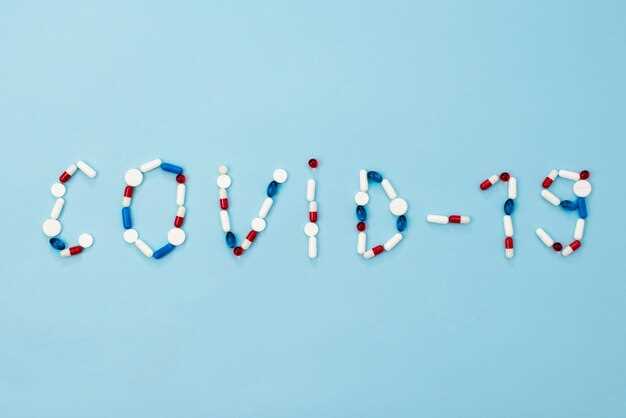
Levothyroxine and l-thyroxine are both synthetic forms of the thyroid hormone thyroxine. While they may seem similar, there are some key differences between the two medications.
Levothyroxine is the most commonly prescribed thyroid hormone replacement medication in the United States. It is the synthetic form of thyroxine that is identical to the hormone produced by the thyroid gland. L-thyroxine is another synthetic form of thyroxine that is used in some countries outside of the US.
Although both medications are designed to treat hypothyroidism, they may have slightly different formulations and dosages. It is important to consult with your healthcare provider to determine which medication is right for you.
So, are levothyroxine and l-thyroxine the same? While they are both synthetic forms of thyroxine, there may be differences in their composition and availability. Talk to your doctor to find out which one is best for your specific needs.
Key Ingredients Comparison

When comparing levothyroxine and l-thyroxine, it is important to look at the key ingredients that make up these medications. Both levothyroxine and l-thyroxine are synthetic forms of the thyroid hormone thyroxine, also known as T4. The main active ingredient in both medications is the same, but there may be differences in the inactive ingredients used in the formulation.
Levothyroxine sodium is the generic name for the synthetic form of the thyroid hormone T4. It is the most commonly prescribed thyroid medication in the United States. L-thyroxine, on the other hand, is another name for the same active ingredient, thyroxine.
Levothyroxine Ingredients:
- Levothyroxine sodium (active ingredient)
- Microcrystalline cellulose
- Calcium phosphate dibasic
- Colloidal silicon dioxide
- Stearic acid
- Magnesium stearate
L-Thyroxine Ingredients:
- Levothyroxine sodium (active ingredient)
- Microcrystalline cellulose
- Calcium hydrogen phosphate dihydrate
- Magnesium stearate
- Maize starch
- Povidone
While the active ingredient in both medications is identical, the differences in inactive ingredients may affect how the medication is absorbed and metabolized in the body. It is important to consult with a healthcare professional or pharmacist to determine which medication is most suitable for your individual needs.
Key Ingredients Comparison
When comparing levothyroxine and l-thyroxine, one of the key aspects to consider is the ingredients used in their formulation. Both medications contain the active ingredient thyroxine, which is a synthetic form of the thyroid hormone T4.
Levothyroxine is typically formulated with additional inactive ingredients such as lactose, magnesium stearate, and cornstarch to help bind the medication and create a stable tablet form. On the other hand, l-thyroxine may contain different inert ingredients depending on the manufacturer.
It’s important to note that despite potential variations in the inactive ingredients, the active ingredient – thyroxine – remains consistent in both levothyroxine and l-thyroxine, ensuring their therapeutic effects are similar.
Manufacturing Process Overview
When it comes to the manufacturing process of levothyroxine and l-thyroxine, it is essential to understand that both medications are synthetic versions of the thyroid hormone thyroxine (T4).
Levothyroxine: The manufacturing process of levothyroxine involves chemical synthesis to create a pure form of the active ingredient. This process typically includes the reaction of specific chemicals to produce the desired compound, followed by purification and formulation into the final product.
Quality control measures are implemented throughout the production process to ensure the potency and purity of the medication.
L-thyroxine: Similarly, the manufacturing process of l-thyroxine also involves synthetic production to create a pharmaceutical-grade version of the thyroid hormone. This process follows strict regulations and guidelines to ensure the safety and efficacy of the medication.
Both levothyroxine and l-thyroxine undergo rigorous testing and quality assurance procedures to meet the standards set by regulatory authorities.
Overall, the manufacturing process of both medications aims to produce a reliable and consistent form of thyroid hormone replacement therapy for patients with hypothyroidism.
Therapeutic Effects Examination
When comparing levothyroxine and l-thyroxine, it’s important to understand that both medications are synthetic forms of the thyroid hormone thyroxine. They are primarily used to treat hypothyroidism, a condition where the thyroid gland does not produce enough hormones. Both medications work by replacing the missing thyroid hormone in the body, which helps restore normal thyroid function.
Although levothyroxine and l-thyroxine are similar in their therapeutic effects, there may be slight differences in how individuals respond to each medication. Some patients may find that one medication is more effective for them than the other, so it’s essential to work closely with a healthcare provider to find the right treatment plan.
| Therapeutic Effects | Levothyroxine | L-Thyroxine |
|---|---|---|
| Normalization of thyroid hormone levels | ✔️ | ✔️ |
| Improvement in symptoms of hypothyroidism | ✔️ | ✔️ |
| Help in regulating metabolism and energy levels | ✔️ | ✔️ |
Overall, both levothyroxine and l-thyroxine have proven to be effective in treating hypothyroidism and restoring thyroid hormone levels in patients. The choice between the two medications may depend on individual response and tolerability, so discussing treatment options with a healthcare provider is key.
Understanding the Similarities
Both levothyroxine and l-thyroxine are synthetic forms of the thyroid hormone thyroxine. They are used to replace or supplement natural thyroid hormones in individuals with hypothyroidism or other thyroid disorders.
Similar Therapeutic Effects

- Both medications work by increasing the levels of thyroid hormones in the body, which can help regulate metabolism, energy levels, and other bodily functions.
- They are both effective in treating hypothyroidism and preventing the symptoms associated with insufficient thyroid hormone production.
Overall, levothyroxine and l-thyroxine have similar therapeutic effects and are often used interchangeably in clinical practice.
Indications for Use Comparison
Levothyroxine and l-thyroxine are both synthetic thyroid hormones commonly prescribed for treating hypothyroidism, a condition characterized by insufficient levels of thyroid hormones in the body.
Levothyroxine is typically used as a replacement therapy in cases of primary, secondary, and tertiary hypothyroidism, as well as in thyroid cancer patients who have undergone thyroidectomy. It is also prescribed to manage thyroid stimulating hormone (TSH) suppression in patients with nodules and goiter.
L-thyroxine, on the other hand, is mainly used for hormone replacement therapy in individuals with hypothyroidism. It helps to restore the balance of thyroid hormones in the body and alleviate symptoms associated with an underactive thyroid gland.
Side Effects Analysis
When considering the side effects of levothyroxine and l-thyroxine, it’s important to note that both medications can cause similar adverse reactions due to their similar active ingredient, synthetic thyroxine (T4).
- Common Side Effects:
- Insomnia
- Nervousness
- Weight changes
- Palpitations
- Tremors
- Less Common Side Effects:
- Dizziness
- Headache
- Diarrhea
- Hair loss
- Heat intolerance
- Serious Side Effects:
- Chest pain
- Irregular heartbeat
- Severe allergic reactions
- Shortness of breath
- Fever
It’s crucial to consult a healthcare provider if you experience any side effects while taking levothyroxine or l-thyroxine. They can provide guidance on managing these effects or adjusting your medication dosage if necessary.
